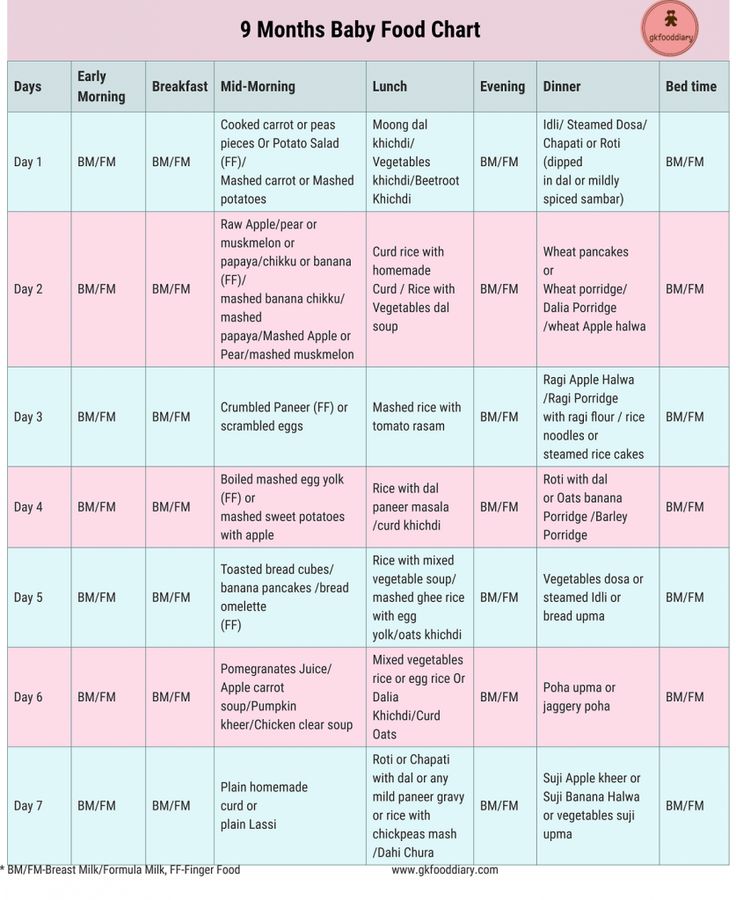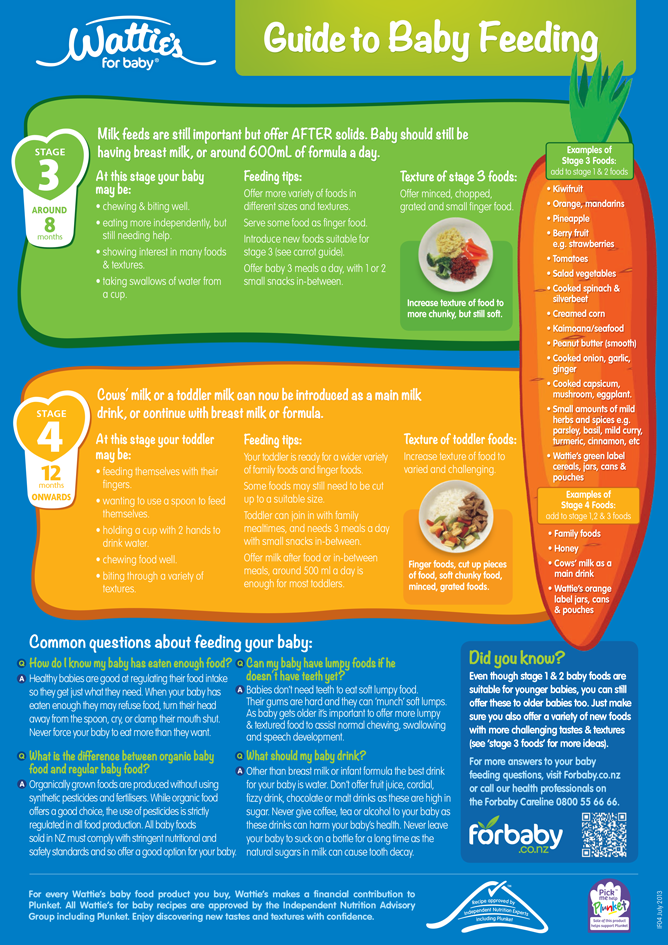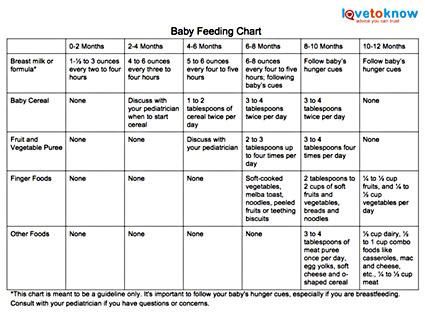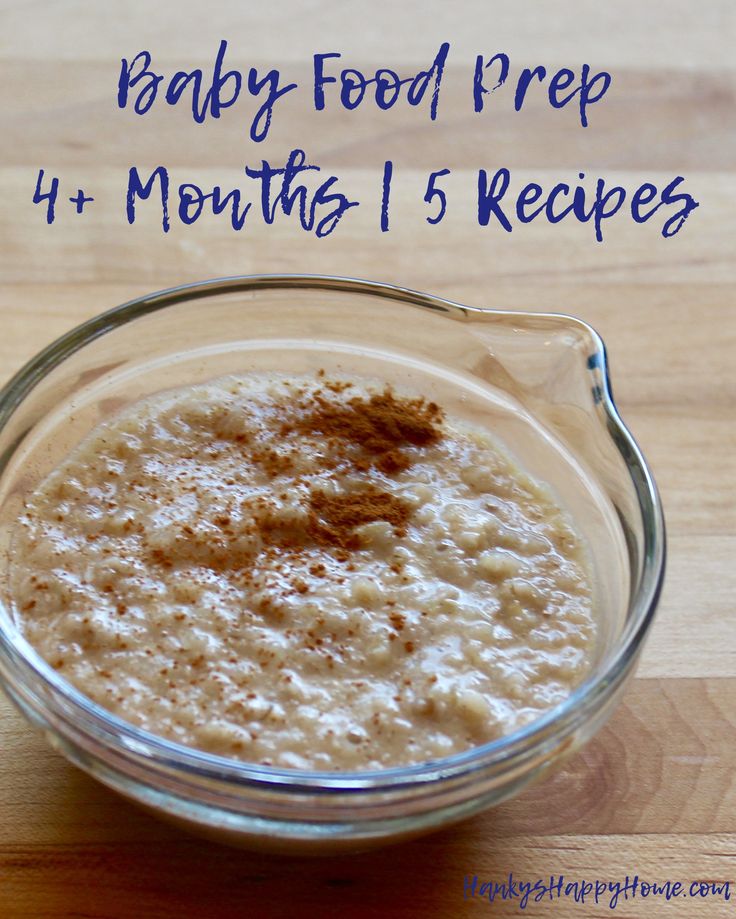Bottle feeding baby to sleep
Should I give my baby a bottle during the night?
Most babies are wired to sleep for short periods. The sleep pattern of frequent night awakenings is typical for babies during their first year of life and likely protects against sudden infant death syndrome (SIDS). Frequent awakenings are a biological necessity for infants and—as tired as parents may feel as a result—are a positive sign of your baby’s overall health and safety.
Your baby may wake at night for several reasons—because he’s hungry, thirsty, lonely, cold, sick, needing a diaper change, or just missing you. Offering a bottle will only directly satisfy the first two needs.
Can a bedtime bottle help my baby sleep through the night?
It’s a common misconception that a bottle of formula before bedtime will help a baby sleep through the night. Formula won’t change your baby’s sleep habits. There’s even some evidence that babies given formula at night sleep less than those who are breastfed.
Is bottle-feeding at night healthier for my baby?
Bottle-feeding is associated with a higher risk of childhood obesity. In part that may be because a bottle-fed baby will often drink for as long as the bottle nipple is in his mouth. He doesn’t learn self-regulation as easily as the breastfed infant because he takes a more passive role in feeding. By contrast, a breastfed baby actively removes milk from the breast and can control how much he gets at the breast by changing the way he nurses.
If I do bottle-feed at night, how can I avoid overfeeding my baby?
Crying can be a sign that your baby is hungry. The younger your baby is, the more likely it is that she’s hungry and needs to be fed.
But your baby may cry for other reasons too. Before offering the bottle, you may want to check her diaper and offer comfort in the form of rocking or a back rub. If your baby’s skin feels warm, check her temperature to see if she has a fever.
If she does appear hungry, try offering just an ounce or two of breast milk or formula (or whatever amount you normally put in the bottle).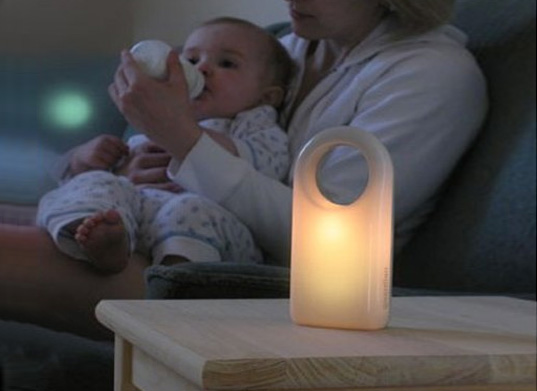 Hold your baby close, and watch for signs that she’s had enough (turning away from the nipple, falling asleep, spitting up milk, and generally acting fussy).
Hold your baby close, and watch for signs that she’s had enough (turning away from the nipple, falling asleep, spitting up milk, and generally acting fussy).
Can I put my baby to bed with a bottle?
You should never put your baby to bed with a bottle. Caregivers who hold their babies during bottle-feeding enjoy better nonverbal communication and emotional bonding with their children. And there are several health and safety reasons not to put babies to bed with a bottle:
- Your baby might choke. Babies who fall asleep while drinking from a bottle can draw liquid into their lungs and choke.
- Your baby’s teeth may decay. When babies are put to bed with bottles or when they are given their bottles as pacifiers, sugary liquids pool around the teeth while they sleep. Bacteria in their mouths use the sugars as food and produce acids that attack the teeth. In the most serious cases, the front teeth can rot completely and need to be removed. (Learn more about oral care for your baby here.
 )
) - Your baby may have more ear infections. A baby’s ear anatomy is not fully developed. Drinking while lying down can cause milk to flow through your baby’s ear cavity, which can cause ear infections. (Learn more about ear infections here.)
Last updated July 19, 2019
Risks of Bottle Feeding in Bed – Cleveland Clinic
When you’re an exhausted parent with a demanding little one at home, anything that saves time or offers you a few extra minutes of super dreamy sleep probably seems like an idea worth trying.
That explains the temptation to leave a bottle of formula or breast milk in your child’s crib. If they wake up hungry, they can just feed themselves. Self-service, right?
Well, you might want to rethink that plan.
A baby’s access to a bottle in bed creates a laundry list of potential problems — and we’re not talking about cleaning spills on bedding or PJs. There are health concerns to consider, as pediatrician Heidi Szugye, DO, IBCLC explains.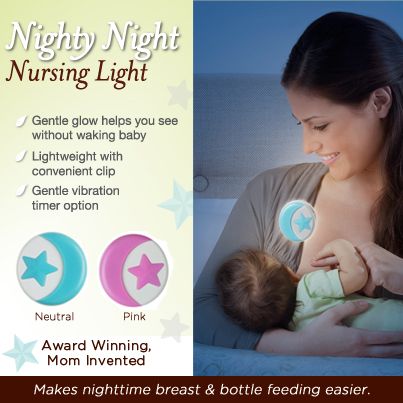
So, how much harm can a bottle of formula or milk really do to your child if they grab it for a late-night feeding? Far more than you’d think, says Dr. Szugye.
Let’s look at five reasons why bottles don’t belong in your baby’s bed.
1. Choking hazardSmall airways in young children make them prone to choking or gagging while drinking — especially if the fluid flows out faster than they can swallow.
If you’re holding your baby and feeding them, you can prop them up and take corrective action to help clear their airway if they start choking or coughing, notes Dr. Szugye. (A few gentle pats on the back usually help.)
But if your baby is alone and lying on their back in bed, they may be unable to adjust on their own. That may lead to them breathing in the fluid and choking.
Advertising Policy
This is also the reason why you shouldn’t leave an infant alone with a propped-up bottle.
On a side note, adding rice cereal to a bottle makes the fluid thicker and increases the risk of choking. The American Academy of Pediatrics recommends against using rice cereal in a bottle as a sleep aid.
2. Tooth decayIf your infant dozes off in their crib while sucking on a bottle, odds are that they nod off with some formula or milk still in their mouth. Whatever they were drinking may pool around any just-emerged teeth.
That’s bad news for those little pearly whites: “There’s a higher risk for tooth decay if a baby falls asleep with formula, milk or some other drink containing sugar in their mouth,” says Dr. Szugye.
The reason? Sugary fluids that linger in the mouth break down into an acid that attacks tooth enamel, leading to deterioration. (Learn more about caring for your baby’s teeth.)
3. Ear infectionsBabies who drink from a bottle in bed may also be more at risk of getting an ear infection. It’s a byproduct of our anatomy — specifically, the eustachian tube connecting your middle ear to the back of your throat.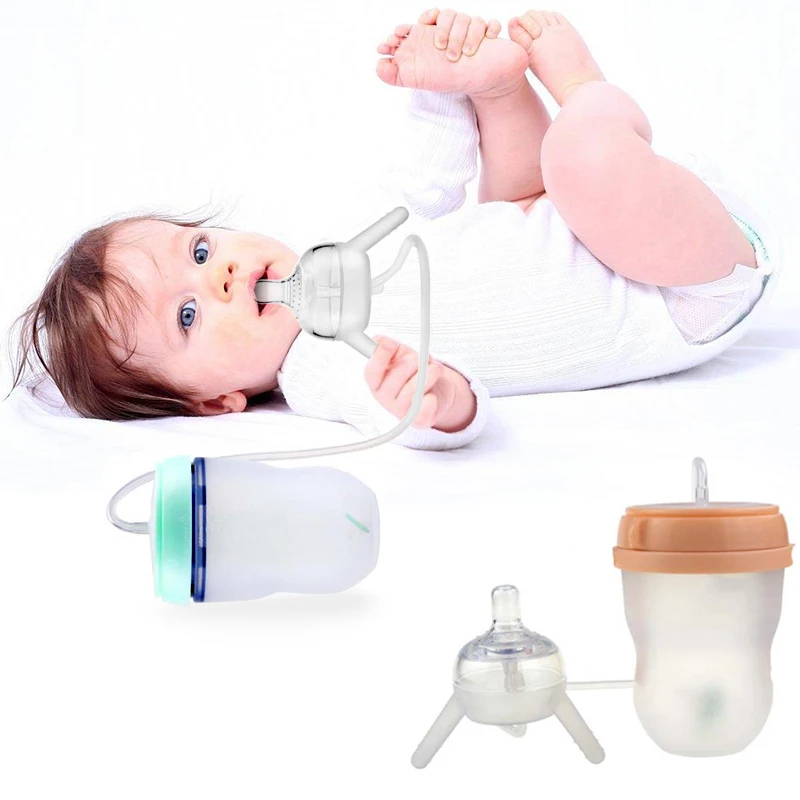
If a baby drinks while lying flat on their back, the fluid may flow into their eustachian tubes and to their middle ear to cause an infection.
4. Future wheezing and asthmaResearch shows a link between bottle feeding in bed and the development of wheezing and asthma in early childhood. (The study focused on children with a family history of asthma or allergies.)
Advertising Policy
5. Feed-to-sleep associationMaking a bottle part of your child’s in-bed sleep routine can strengthen their feed-to-sleep association. You’re basically turning a bottle into a comfort object that becomes required for ZZZs.
That dependency can make your baby’s eventual night weaning and sleep training more difficult. “It’s best to just not to start the habit of leaving a bottle in the crib,” advises Dr. Szugye.
Feeding and bedtimeSo, what should you do to make sure your baby’s belly isn’t grumbling at bedtime? Dr. Szugye recommends feeding them about 15 minutes before they go to sleep as part of their bedtime routine.
Szugye recommends feeding them about 15 minutes before they go to sleep as part of their bedtime routine.
“Keep them upright after they feed before putting them down on a flat surface to sleep,” says Dr. Szugye. “That’ll get you past the time when they might spit up and avoid exacerbating any reflux.”
And when it comes to providing them a grab-and-snack option for later, the recommendations are clear: “You never want to put a bottle in the baby’s bed with them,” stresses Dr. Szugye.
To hear more from Dr. Szugye on this topic, listen to the Health Essentials Podcast episode “Babies and Bedtime.” New episodes of the Health Essentials Podcast are available every Wednesday.
Artificial feeding of babies | Bebbo
Submitted by Ilya Danshyn on Wed, 12/08/2021 - 18:40
Sometimes the baby cannot breastfeed, so you have to express milk and bottle feed the baby. Some babies are formula fed because for some reason breastfeeding is not possible, or lactation has stopped prematurely, or you have chosen to formula feed your baby.
- Make sure that the rate of milk flow from the bottle through the nipple is appropriate for the baby.
- To check this, turn the filled bottle upside down.
- Milk should drip quickly, not squirt. If you have to shake the bottle hard to make the milk drip, it means that the nipple is not providing the normal intensity of feeding.
- The baby can fall asleep even before he has eaten everything from the bottle.
- It is normal for a small amount of milk to leak from the corners of the mouth; it will stop when the child gets older.
- If you can't find the perfect nipple, choose the one that produces the most milk; it's okay if you have to go through how many nipples before you find one that's right for you and your baby.
How to bottle feed your baby
- Sit back and hold your baby in your arms, gently but firmly. It is better for the baby to be in a more upright position, similar to the position when breastfeeding.

- Place the pacifier between the baby's lips; he will open his mouth and start sucking.
- Hold the bottle at an angle so that the nipple and mouth of the bottle are constantly filled with milk; this will prevent the child from swallowing air.
- When the baby stops actively sucking or has eaten half the milk from the bottle, carefully remove the bottle and check if he wants to burp; after that, you can continue feeding.
- Change the position of the baby during feeding or at least at each feeding; this allows even stimulation of the baby's sensations on both sides of the body and prevents positional deformation of the head.
How much milk does a baby need?
- The number of meals and the amount of milk is determined by the baby! Different babies require different amounts of breast milk or formula. Feeding time is not always evenly distributed over the time of day, sometimes children eat more during the day, followed by a long night break.

- If you are formula feeding, check the chart on the box. Of course, the recommended serving size for your age will only serve as a guideline and may not necessarily be appropriate for your child.
- When a baby begins to receive complementary foods, as the amount of solid food increases, the baby's need for milk decreases.
- The amount of formula your baby eats will decrease when he switches from bottle to cup.
- By the age of 12 months, when a baby can switch to cow's milk, he usually receives 500-600 ml of breast milk or formula per day.
Some babies never eat the recommended amount of milk for their age and height. For some, this "recommended" volume is not enough. At least six wet diapers during the day, constant but not excessive weight gain, a healthy and active child - all this indicates that everything is in order. If you are concerned that your baby is not getting enough milk or formula, contact your doctor.
Responsive feeding from the bottle in accordance with the needs of the child
- Feed the baby when he shows that he is hungry and not on the schedule, follow his signals.

- Do not feed the baby if he is not hungry, just because the formula is already prepared - this can lead to overfeeding the baby.
- When a baby is bottle fed, there is no difference between foremilk and hindmilk that affects the feeling of fullness in a breastfed baby.
- The child is often held so that the milk simply flows into the mouth rather than actively suckling; in this case, he eats too much milk too quickly.
- During feeding, watch the baby for signs of satiety - he turns away from the bottle, sucks lazily - and stop feeding in time.
- Hold the baby close to you during feeding, hug and talk to him; it stimulates growth and development and also strengthens the bond between you and your child.
- The baby did not eat everything from the bottle and fell asleep while eating.
- Don't worry if the child hasn't eaten everything; he knows how much formula or breast milk he needs.
- If the child falls asleep while eating, put him on your shoulder, stroke or pat him on the back and legs; Changing diapers is also an effective way to wake up a baby.
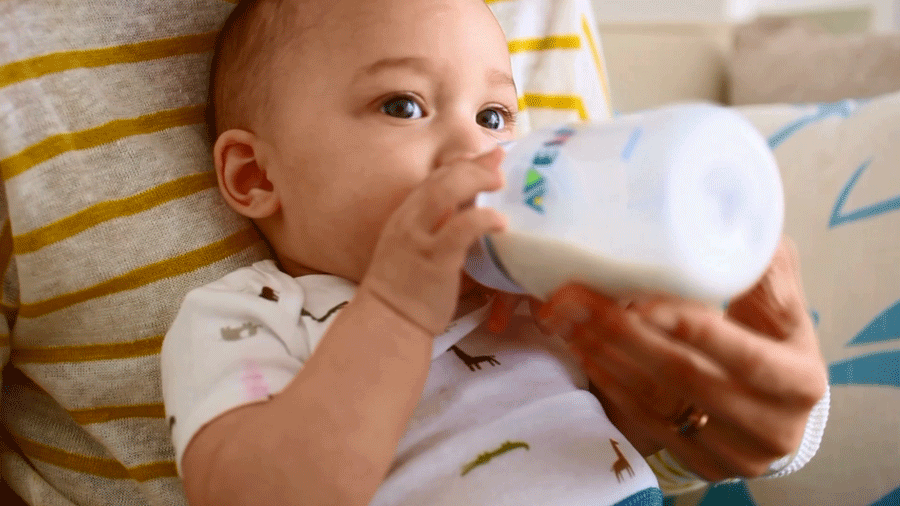
- Wait until the baby is awake before giving him any leftover milk.
Always empty the remaining milk from the bottle if more than an hour has passed!
Night feeding
- Every baby is different. Some wean from night feeding at four months, and some at two years. From the 6th month of life, healthy children no longer need night feeding. Now it's just a habit that gets harder to change the older the child gets.
- If a baby is bottle fed, this is the last age to stop eating at night! Do not replace milk with juices or other sweetened drinks to protect your child's teeth from cavities.
- If your baby drinks 60 ml or less of milk during the night, you can simply stop feeding at night and calm the baby as you usually do, and then put him back in the crib to fall asleep on his own.
- If your baby eats more than 60 ml every night, gradually reduce the amount of milk over 5-7 nights and lull the baby as you normally do.
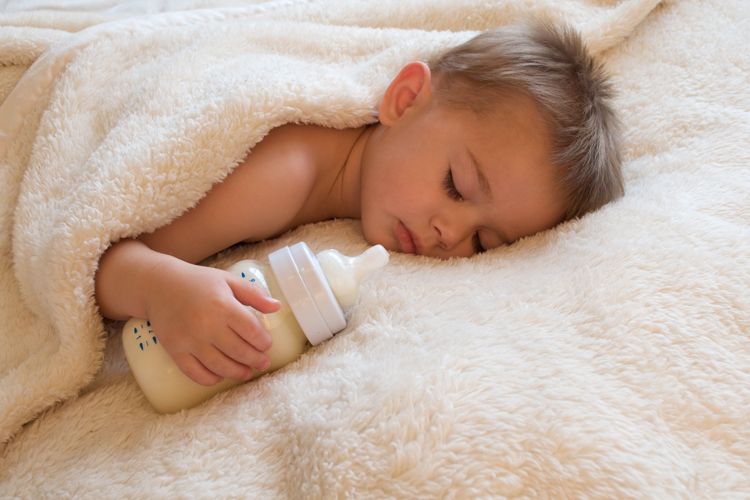
Risks of bottle feeding in bed
- If your child gets used to falling asleep with a bottle in bed, it will be more difficult for him to learn to calm down or fall asleep on his own.
- If a child falls asleep with a bottle in his mouth, there is a risk of choking on milk and suffocation. Babies are not as light sleepers as older children and adults, and do not wake up if something prevents them from breathing.
- A mixture left in the mouth during sleep leads to dental caries.
- When a child drinks from a bottle lying down, the risk of ear inflammation increases.
Australian Article
On
Cover Image
Image
© UNICEF/UN0158032/Voronin
KeyWords
Breast Feed
Category
Power
Child Age
1st month
2nd month
3-4 months
003
How to prepare your baby for bottle feeding
If this method of feeding is a completely new experience for the baby, or if parents decide to bottle feed their baby from a very young age, then slow flow teats should be preferred.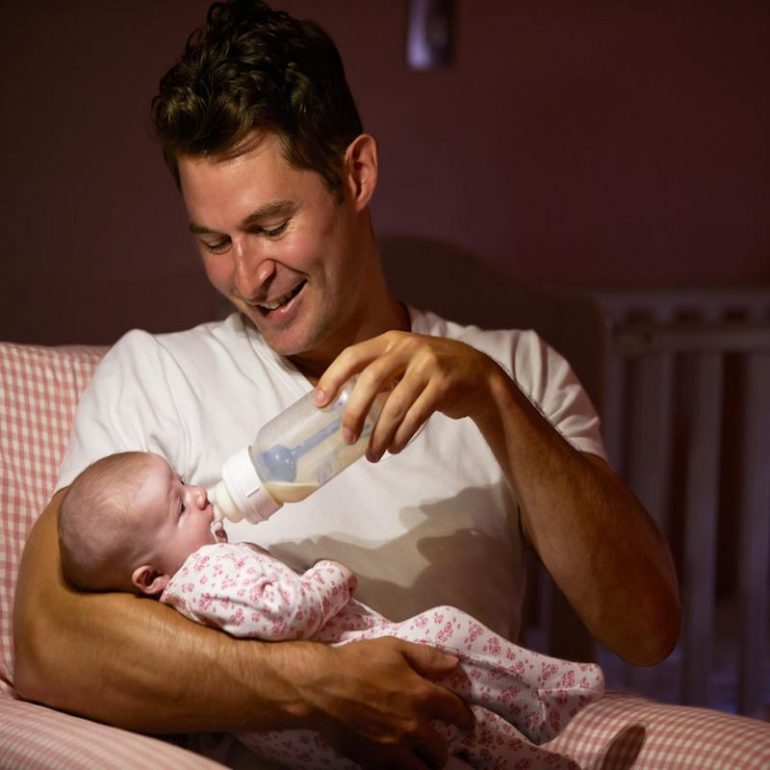 So you protect the child from the possibility of choking while eating. Over time, you can gradually switch to bottles with nipples, which would provide faster and more intense feeding.
So you protect the child from the possibility of choking while eating. Over time, you can gradually switch to bottles with nipples, which would provide faster and more intense feeding.
Feeding bottle selection and daily care
All baby accessories should be kept clean and sterilized regularly and thoroughly.
There are several ways to sterilize dishes:
- select the appropriate mode when using the dishwasher;
- or place the bottle and teat in a vessel of boiling water for 5 minutes.
Before using this method of cleaning the bottle, make sure that the material from which it is made can be exposed to high temperatures. Since some types of plastic contain various chemicals in their composition, after sterilization they can become dangerous for their little user. For this reason, experts recommend choosing glass bottles.
The need for thorough cleansing of everything that the baby will touch is caused by the fact that in the first months of life, the child's immune system is just beginning to strengthen. Before sterilizing the teat, it can be cleaned with dishwashing detergent. There are special products for washing children's dishes, without a strong odor and with a safe composition.
Before sterilizing the teat, it can be cleaned with dishwashing detergent. There are special products for washing children's dishes, without a strong odor and with a safe composition.
How to bottle feed your baby
Before starting a meal, mom or dad should wash their hands well with soap and warm running water. Particular attention should be paid to the area between the fingers and under the nails. The hand washing process should take at least 20 seconds. And after carrying out this hygienic procedure, hands should be wiped dry with a paper towel or clean towel.
The next step is to prepare for the meal. If you plan to fill the bottle with formula, then dilute it with water in accordance with the instructions in the instructions. Improper proportions can lead to dehydration or bloating. It should also be remembered that for the preparation of the mixture you need to use only clean drinking water.
Breast milk is the most beneficial for a newborn. Despite this, pediatricians advise breastfeeding babies for as long as possible. Even if the mother is ready to give up breastfeeding, milk can be expressed into a bottle and gradually accustom the baby to the nipple. If, for one reason or another, the mother does not have the opportunity to feed herself, then the only alternative is feeding with a special mixture.
Despite this, pediatricians advise breastfeeding babies for as long as possible. Even if the mother is ready to give up breastfeeding, milk can be expressed into a bottle and gradually accustom the baby to the nipple. If, for one reason or another, the mother does not have the opportunity to feed herself, then the only alternative is feeding with a special mixture.
In the first six months after birth, cow's or goat's milk or its substitute in the form of soy milk should not be included in the baby's diet. Valid options for supporting healthy development of a newborn are breast milk or formula milk only.
What temperature should the bottle filler be? Under no circumstances should the bottle be heated on the stove or in the microwave. If the temperature of the bottle and its filling exceed 37°C, the baby may be burned. It is recommended to use special bottle warmers. If this is not possible, then use the following method:
- put a saucepan on the stove with a little water;
- bring the water to a boil, then remove the pan from the heat;
- place a bottle of milk in a vessel and heat it up to 37◦С;
- check the temperature with a pre-cleaned thermometer or a special device for measuring the temperature of foodstuffs.

You can also check the temperature of the ready-to-use bottle as follows:
- turn the bottle over;
- drip several times into your wrist area.
In this way, you can check not only the temperature of the milk or formula, but also how well the liquid flows out of the bottle. If you have to shake or squeeze the bottle hard to drip, the nipple is blocked and needs to be cleaned out. If, on the contrary, the filler pours out when the bottle is turned over, this means that the nipple is damaged and another nipple should be used to feed the baby, having previously sterilized it.
How to bottle feed your baby lying down
There are several techniques for feeding your baby. However, it is the feeding of the child lying down from the bottle that young parents consider the most comfortable. It is worth noting that eating in this position will only be safe when the baby's head is slightly raised. Otherwise, the child may simply choke.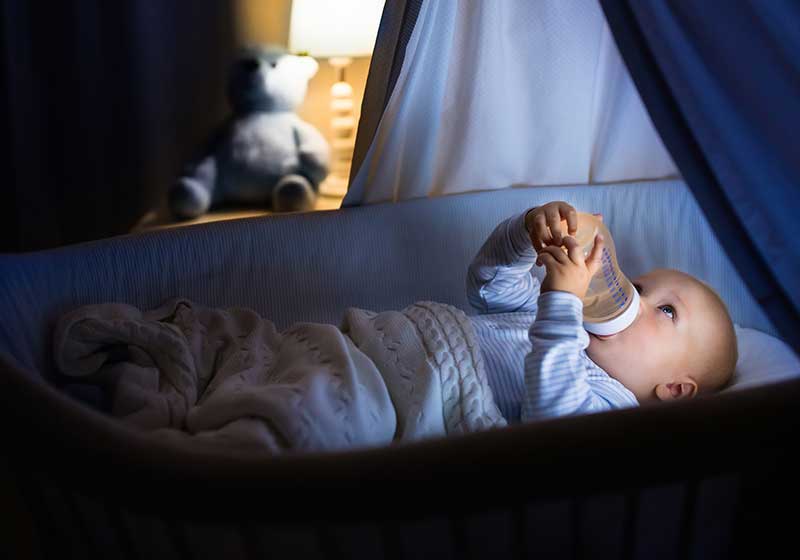 In the prone position, the child should be placed on his arm bent at the elbow. After feeding, you should place the baby in an upright position, taking him in your arms and putting his stomach to your chest.
In the prone position, the child should be placed on his arm bent at the elbow. After feeding, you should place the baby in an upright position, taking him in your arms and putting his stomach to your chest.
Make sure that the feeding bottle is closed correctly: the ring at the connection of the nipple to the bottle must not be too tight. Air must enter the bottle, otherwise a vacuum will be created there, which, in turn, will complicate the consumption of food for the child.
How to bottle feed without spitting up
Since the newborn is not able to fully control the process of feeding, along with milk, he can also take in air. This may be the reason that at one meal the child could not master the planned portion. In view of this, it is recommended to take small breaks during feeding.
As soon as you notice that the baby has stopped sucking on the pacifier, is tired or thoughtful, pick him up and press his face to you, holding his head and back.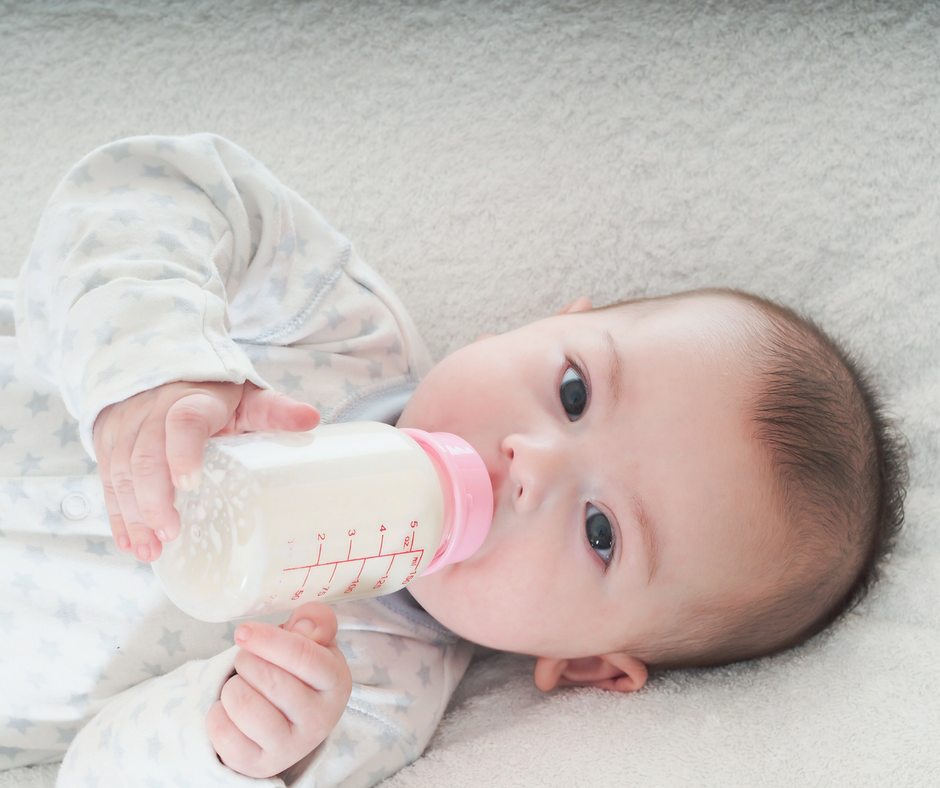 To help burp excess air, you can make a light massage between the shoulder blades, pat on the back or pope.
To help burp excess air, you can make a light massage between the shoulder blades, pat on the back or pope.
The air will quickly rise up and the baby will burp it without any extra effort. However, you should be prepared for the fact that, along with the air, part of the consumed mixture or milk may also return. Therefore, before taking the baby in your arms, cover yourself with a diaper, because it will be easier to wash it than clothes.
Never leave your baby alone with the bottle or let him fall asleep while using it. After eating, mom or dad must help their child burp. This will help to avoid colic, bloating and other manifestations of stomach discomfort.
Where to buy baby accessories
It's safe to say that I Love Mommy online store is one of the best places to buy baby food. Our catalogs feature products from world-famous brands, the quality of which you will not have to doubt for a minute. Bottles, baby dishes, pacifiers, baby bibs - all this and much more you can buy for your son or daughter from us at affordable prices in just a few minutes.






